Stefania Colonnese
A Reinforcement Learning Environment for Multi-Service UAV-enabled Wireless Systems
May 11, 2021



Abstract:We design a multi-purpose environment for autonomous UAVs offering different communication services in a variety of application contexts (e.g., wireless mobile connectivity services, edge computing, data gathering). We develop the environment, based on OpenAI Gym framework, in order to simulate different characteristics of real operational environments and we adopt the Reinforcement Learning to generate policies that maximize some desired performance.The quality of the resulting policies are compared with a simple baseline to evaluate the system and derive guidelines to adopt this technique in different use cases. The main contribution of this paper is a flexible and extensible OpenAI Gym environment, which allows to generate, evaluate, and compare policies for autonomous multi-drone systems in multi-service applications. This environment allows for comparative evaluation and benchmarking of different approaches in a variety of application contexts.
Multiscale Anisotropic Harmonic Filters on non Euclidean domains
Feb 01, 2021

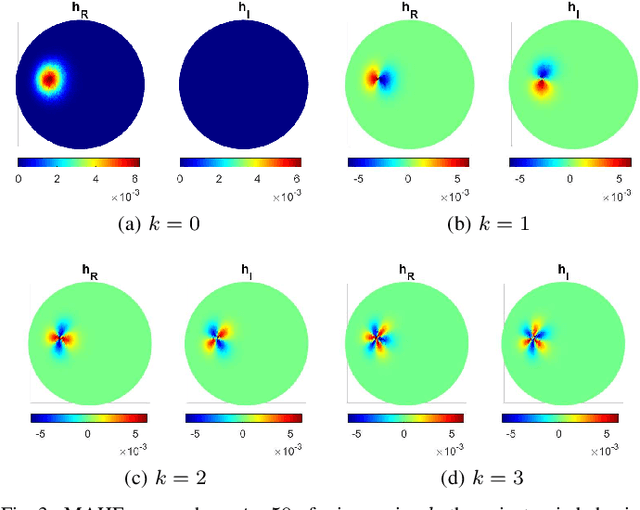

Abstract:This paper introduces Multiscale Anisotropic Harmonic Filters (MAHFs) aimed at extracting signal variations over non-Euclidean domains, namely 2D-Manifolds and their discrete representations, such as meshes and 3D Point Clouds as well as graphs. The topic of pattern analysis is central in image processing and, considered the growing interest in new domains for information representation, the extension of analogous practices on volumetric data is highly demanded. To accomplish this purpose, we define MAHFs as the product of two components, respectively related to a suitable smoothing function, namely the heat kernel derived from the heat diffusion equations, and to local directional information. We analyse the effectiveness of our approach in multi-scale filtering and variation extraction. Finally, we present an application to the surface normal field and to a luminance signal textured to a mesh, aiming to spot, in a separate fashion, relevant curvature changes (support variations) and signal variations.
Improving J-divergence of brain connectivity states by graph Laplacian denoising
Dec 22, 2020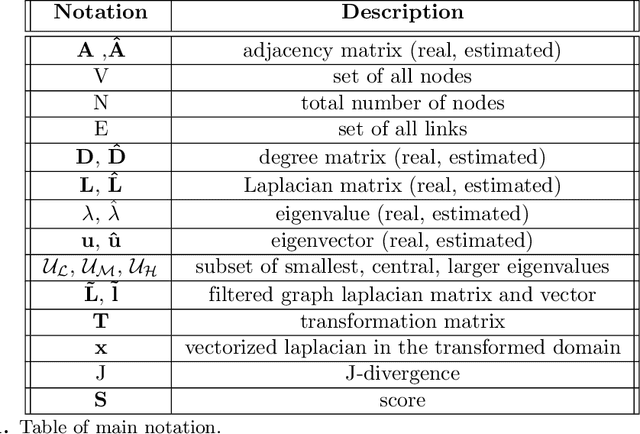
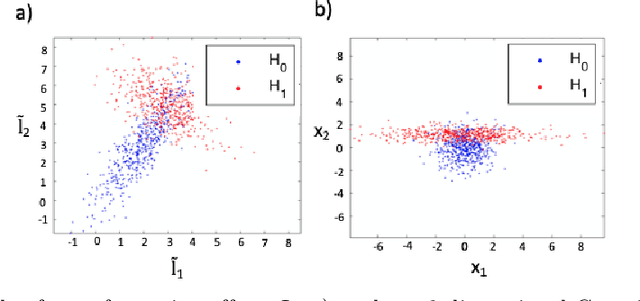
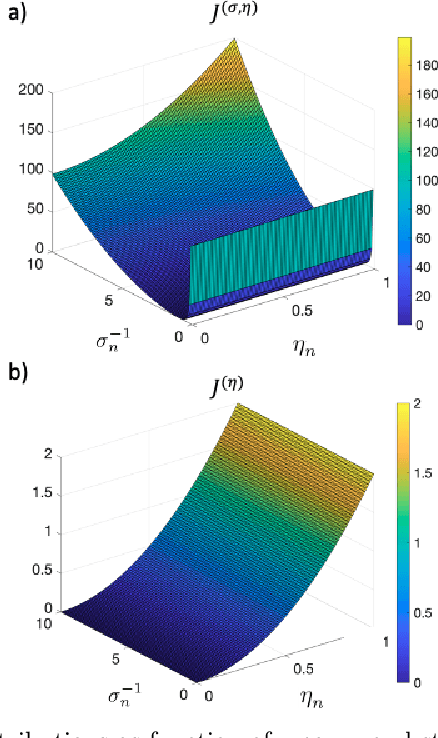
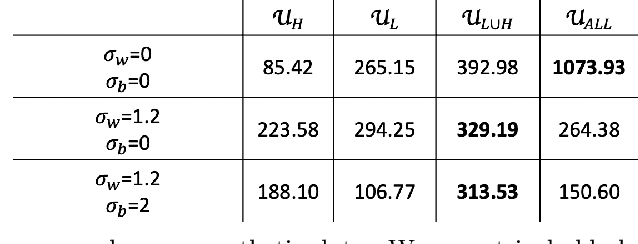
Abstract:Functional connectivity (FC) can be represented as a network, and is frequently used to better understand the neural underpinnings of complex tasks such as motor imagery (MI) detection in brain-computer interfaces (BCIs). However, errors in the estimation of connectivity can affect the detection performances. In this work, we address the problem of denoising common connectivity estimates to improve the detectability of different connectivity states. Specifically, we propose a denoising algorithm that acts on the network graph Laplacian, which leverages recent graph signal processing results. Further, we derive a novel formulation of the Jensen divergence for the denoised Laplacian under different states. Numerical simulations on synthetic data show that the denoising method improves the Jensen divergence of connectivity patterns corresponding to different task conditions. Furthermore, we apply the Laplacian denoising technique to brain networks estimated from real EEG data recorded during MI-BCI experiments. Using our novel formulation of the J-divergence, we are able to quantify the distance between the FC networks in the motor imagery and resting states, as well as to understand the contribution of each Laplacian variable to the total J-divergence between two states. Experimental results on real MI-BCI EEG data demonstrate that the Laplacian denoising improves the separation of motor imagery and resting mental states, and shortens the time interval required for connectivity estimation. We conclude that the approach shows promise for the robust detection of connectivity states while being appealing for implementation in real-time BCI applications.
 Add to Chrome
Add to Chrome Add to Firefox
Add to Firefox Add to Edge
Add to Edge